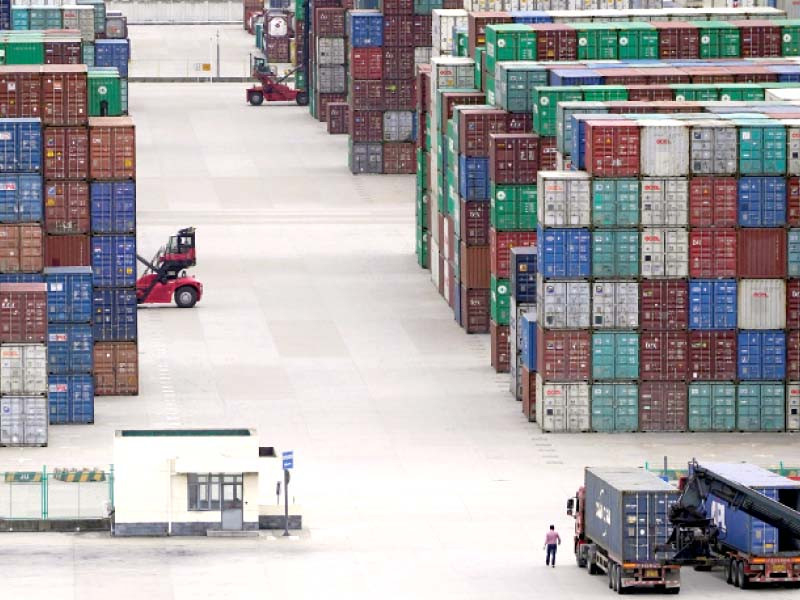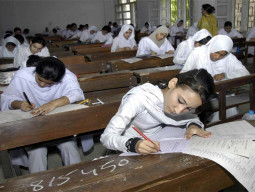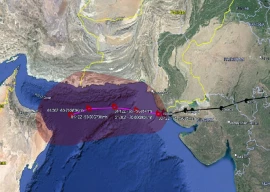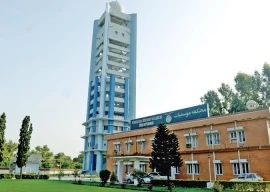
“Trade with India is the need of the hour and beneficial to both countries … it should open now,” so the PM Adviser on Commerce Abdul Razak Dawood declared last week.
About a year ago, he took some practical steps in that direction when he got the Economic Coordination Committee of the cabinet to approve the import of cotton and sugar from India.
However, he soon had to retract from that position as some of his cabinet colleagues strongly opposed it due to political tensions between the two countries.
It is uncertain if those who opposed it earlier will change their position now that the government is heading into the election year.
But maybe the commerce adviser has seen some winds of change, which is why he made this statement. It could be that the decision-makers now understand that it is time for policies based on geo-economics rather than geopolitics.
Why is normalising trade with India important for us?
First, we have to realise that despite restrictions, trade is still taking place, but it is through other sources such as routing it through the UAE, which is the second-largest source of imports for Pakistan.
Getting Indian imports through third countries mean extra costs in transportation, repacking, stuffing and de-stuffing, port charges, and preparing new bills of lading and expenses for the intermediaries.
In short, it means higher costs for consumers, who are primarily the users of industrial raw material.
Second, it is time for Pakistan to build on the current momentum of growing exports. It will need lots of inputs for this purpose. This input has to be from competitive sources so that exports can be competitive in the international markets.
For example, one essential raw material for the textile industry is raw cotton. About seven to eight years ago, Pakistan produced about 12 to 14 million bales, but in recent years, the production has plunged to seven to eight million bales.
To meet the shortfall, we have to spend $2-3 billion to import it from far-off sources such as the US and Brazil. The government is keen to double exports of the textile sector from this year’s target of $21 billion to $42 billion over the following three years. Without adequate availability of cotton, achieving such a high growth in exports would remain a mirage.
It is not just cotton, but several other raw materials used to be competitively sourced from India. These include organic chemicals, plastic and tanning/dyeing extracts, primarily used by our export-oriented industries.
Third, due to various factors, including steep devaluation and spike in international commodity prices, Pakistan has recently been facing high inflation, particularly for food items. In the past, one primary tool against shortages and inflation was through immediate imports from the next-door neighbour.
It was not just import, but we also had a good market for export of our excess agricultural produce.
This year, we expect a bumper crop of potatoes. The expected output is more than nine million tons compared to an average of five million tons previously. Unless we find export markets, our farmers will face severe financial hardships. India can be one such destination as it is facing shortfall of potatoes.
It has already cut import duty from 30% to 10% to encourage imports. This reduction is an opportunity for us to capture the Indian potato market.
Also, Pakistan used to export dried dates worth more than $100 million. The stoppage of this export has brought misery for the poor people of Sindh. The resumption of this trade will considerably reduce their poverty. Fourth, India’s imports from across the world are about $400 billion, but Pakistan has no share.
Major exporting countries, including the US, EU, UK, Australia, the UAE and Japan, are rushing to conclude bilateral free trade agreements with India to get a significant share in that large market.
As a next door neighbour, Pakistan is well placed to grab some percentage of that market.
The World Bank estimates that formal trade between India and Pakistan could be $37 billion or 15-fold more than the trade levels in 2019, when it was relatively more open.
Imagine the economic activity it could create by adding 50% to our international trade.
Overall, the adviser’s initiative to reopen trade with India is indeed the need of the hour. It will help improve our economic growth and balance of payments through savings on freight and make our industry more competitive.
It is the shortest route to employing millions who lost their jobs during the Covid-19 pandemic.
The writer has served as Pakistan’s ambassador to WTO and FAO’s representative to the United Nations at Geneva
Published in The Express Tribune, February 28th, 2022.
Like Business on Facebook, follow @TribuneBiz on Twitter to stay informed and join in the conversation.
























COMMENTS (7)
Comments are moderated and generally will be posted if they are on-topic and not abusive.
For more information, please see our Comments FAQ